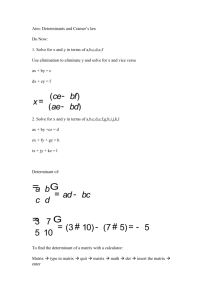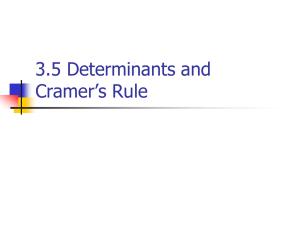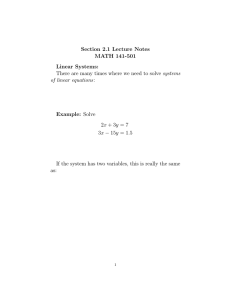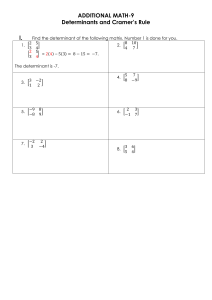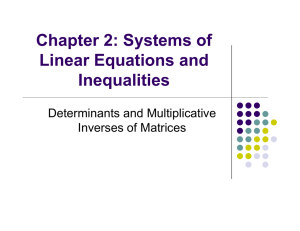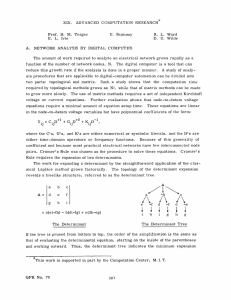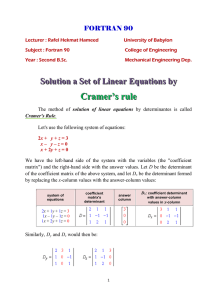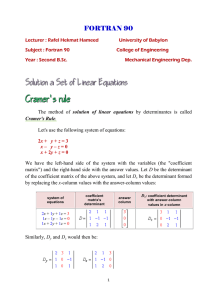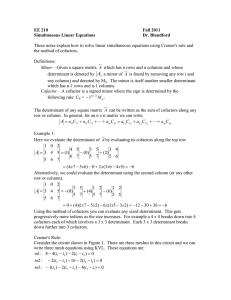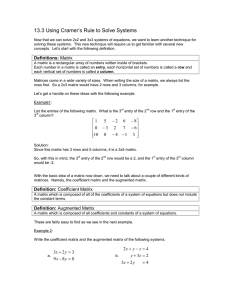Document 10583071
advertisement
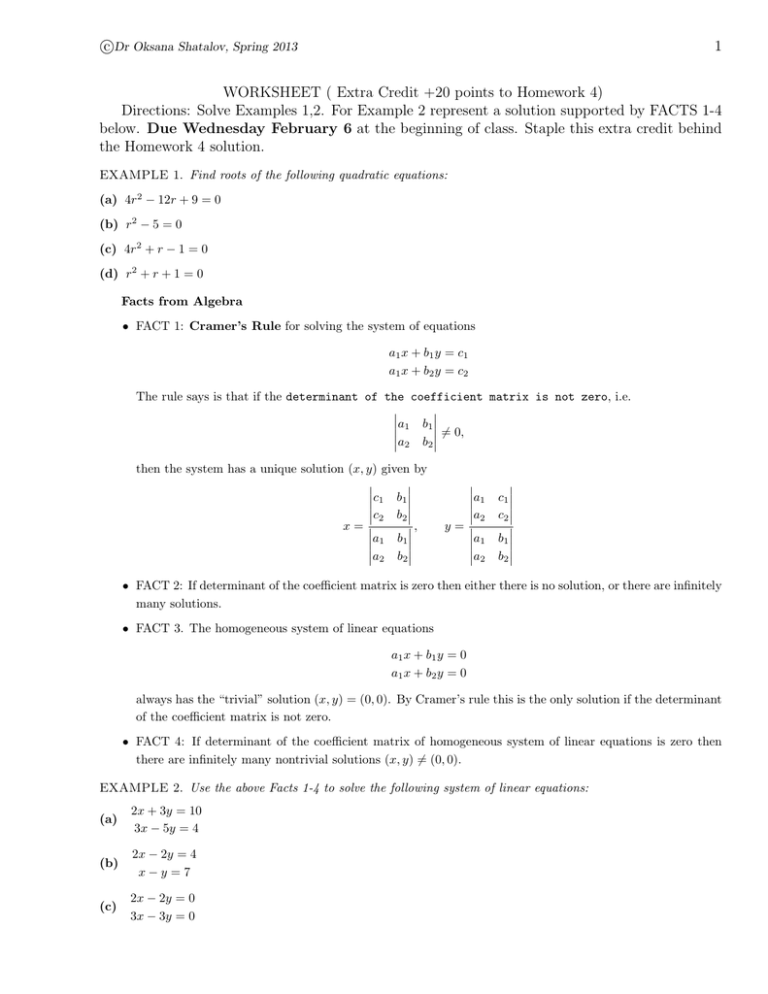
c Dr Oksana Shatalov, Spring 2013 1 WORKSHEET ( Extra Credit +20 points to Homework 4) Directions: Solve Examples 1,2. For Example 2 represent a solution supported by FACTS 1-4 below. Due Wednesday February 6 at the beginning of class. Staple this extra credit behind the Homework 4 solution. EXAMPLE 1. Find roots of the following quadratic equations: (a) 4r2 − 12r + 9 = 0 (b) r2 − 5 = 0 (c) 4r2 + r − 1 = 0 (d) r2 + r + 1 = 0 Facts from Algebra • FACT 1: Cramer’s Rule for solving the system of equations a1 x + b1 y = c1 a1 x + b2 y = c2 The rule says is that if the determinant of the coefficient matrix is not zero, i.e. a b 1 1 6= 0, a2 b2 then the system has a unique solution (x, y) given by c b 1 1 c2 b2 , x = a1 b1 a2 b2 a 1 a2 y = a1 a2 c1 c2 b1 b2 • FACT 2: If determinant of the coefficient matrix is zero then either there is no solution, or there are infinitely many solutions. • FACT 3. The homogeneous system of linear equations a1 x + b1 y = 0 a1 x + b2 y = 0 always has the “trivial” solution (x, y) = (0, 0). By Cramer’s rule this is the only solution if the determinant of the coefficient matrix is not zero. • FACT 4: If determinant of the coefficient matrix of homogeneous system of linear equations is zero then there are infinitely many nontrivial solutions (x, y) 6= (0, 0). EXAMPLE 2. Use the above Facts 1-4 to solve the following system of linear equations: (a) 2x + 3y = 10 3x − 5y = 4 (b) 2x − 2y = 4 x−y =7 (c) 2x − 2y = 0 3x − 3y = 0
